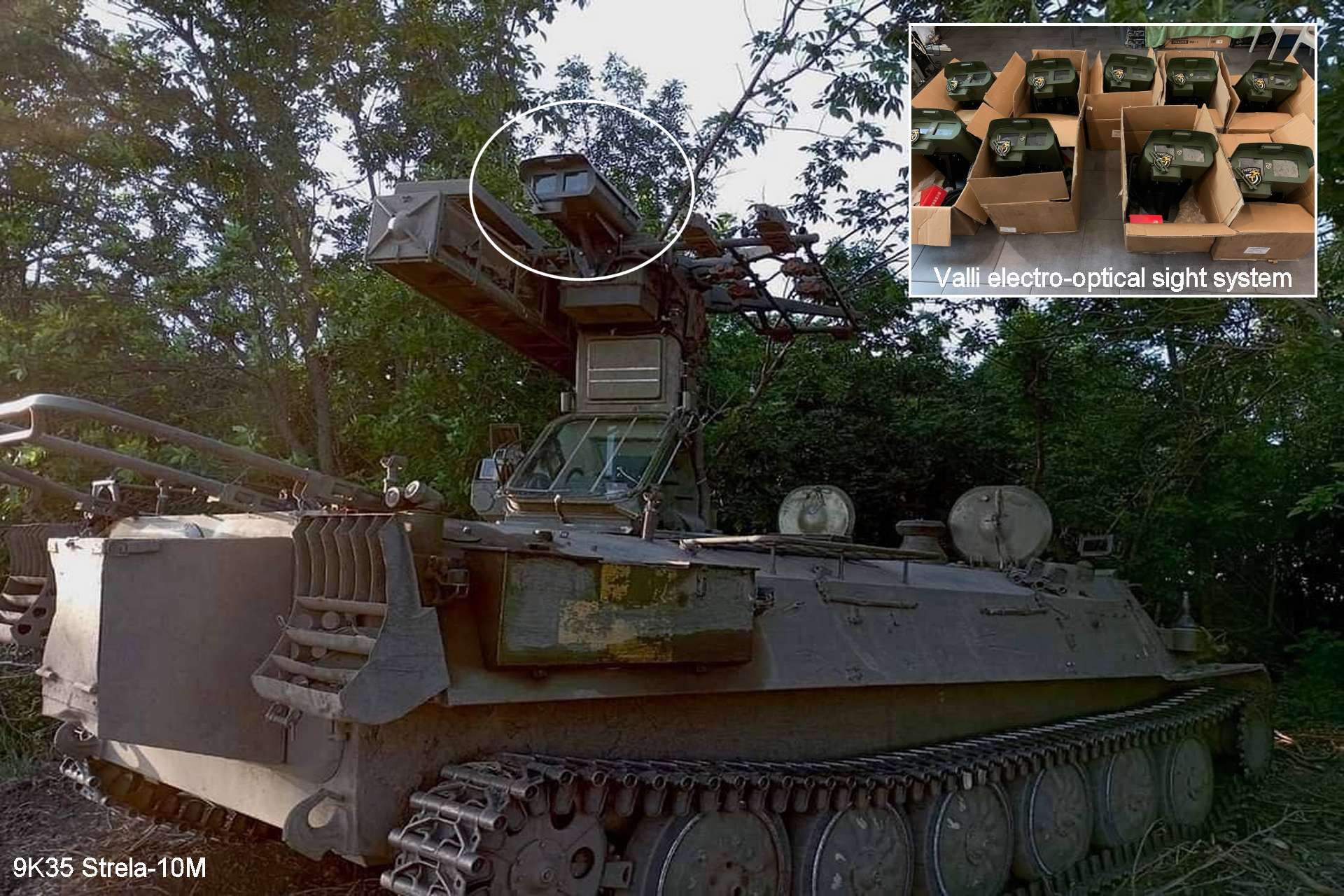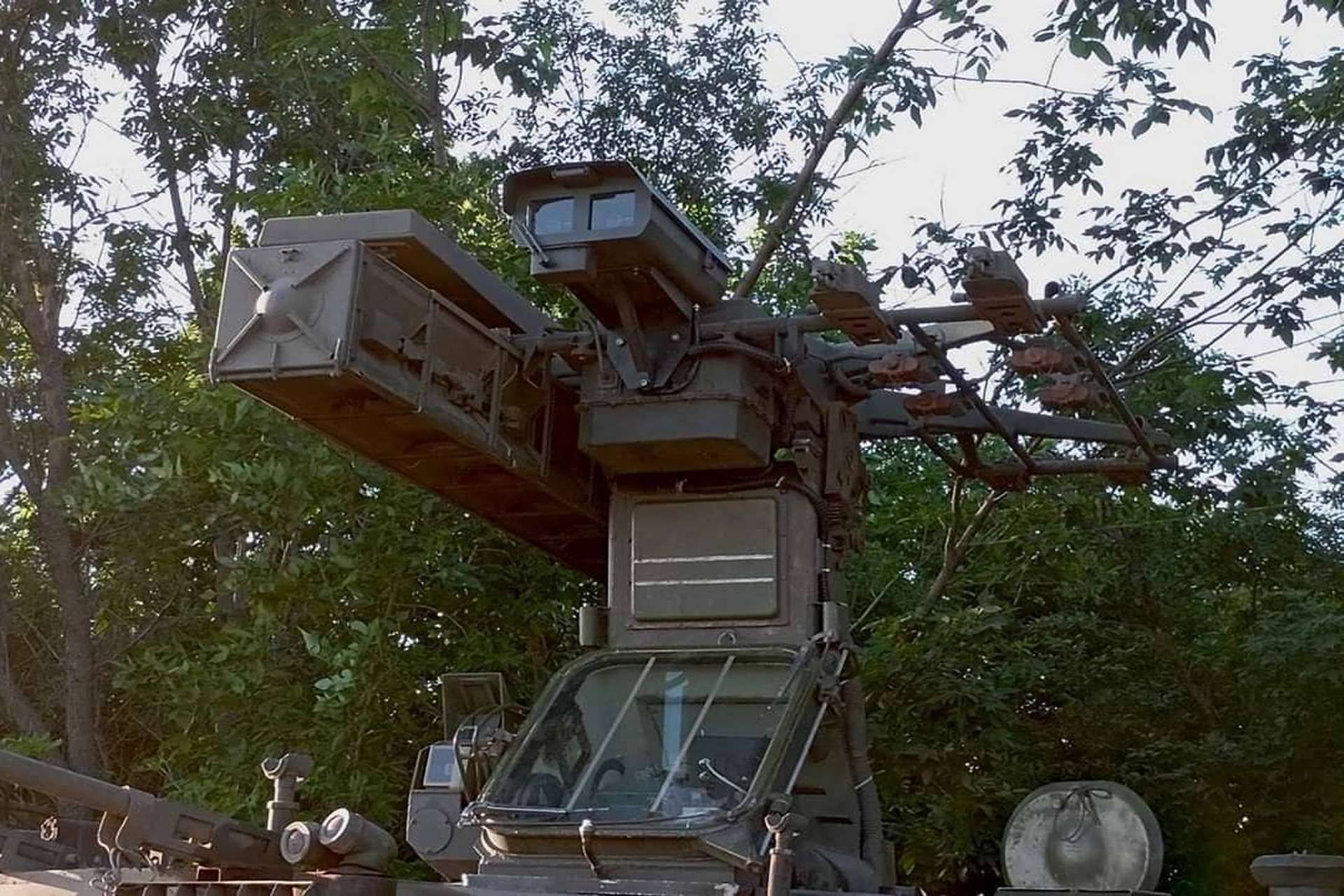Breaking news
Ukraine Successfully Target Russian Drones Using Upgraded SA-13 Air Defense System.
On May 28, 2024, the Ukrainian Serhiy Prytula Charity Foundation announced on their Facebook account that nine 9K35 Strela-10M air defense systems (NATO name: SA-13 Gopher) had been upgraded by integrating Valli, an electro-optical sight for detection, tracking, and targeting of aerial targets. Designed for rapid modernization of these ground-to-air missile systems, Vali is particularly effective against reconnaissance and attack drones. This upgrade enhances the operational capabilities of the system without active radar emissions, allowing the operator to view images from two cameras simultaneously or separately on a monitor, significantly increasing its defensive functionality against these modern aerial targets.
Follow Army Recognition on Google News at this link

Ukrainian 9K35 Strela-10M air defense system (NATO name: SA-13 Gopher) upgraded by integrating Valli electro-optical sight (Picture source: Serhiy Prytula Charity Foundation )
Electro-optical sights like Valli utilize high-definition cameras and laser systems to identify and track drones using visual data. This method is particularly advantageous in conditions where adversaries use electronic jamming to neutralize traditional guidance systems based on infrared or radio frequencies. Indeed, electro-optical systems are less likely to be affected by jamming, as they do not rely on radio frequency emissions that can be detected and disrupted.
By adding Valli to the Strela-10M, the system gains not only in precision through better visual identification of targets but also in detection range. The cameras and lasers can detect targets at greater distances and with increased accuracy compared to older sensors. Moreover, this enhanced ability to operate passively without emitting detectable signals makes the system much harder to locate and target by the enemy. During testing, the modernized Strela-10 system reportedly managed to shoot down 5 Russian drones of the Zala, Lancet, and Supercam types.
Originally developed during the Cold War, the Strela-10 series was designed to provide mobile air defense for motorized infantry units against low-flying aircraft, helicopters, and UAVs. As threats evolved, the need for a system that could operate under the radar, both literally and figuratively, became apparent. The Strela-10M variant brought improvements in range and precision over its predecessors.
The Strela-10M system, known for its use in various conflicts since its creation, uses infrared guidance to track and engage enemy targets. Unlike systems that rely on radar, the Strela-10M uses the thermal signatures of aircraft or missiles to lock on and launch its missiles. This method allows for effective engagement without the need for continuous radar activity, which can reveal the launcher's position. To recall, The SA-13 GOPHER or 9K35 Strela-10 is a short-range SAM (Surface-to-Air) system designed to defend troops on the march from low-altitude aircraft and helicopters, precision-guided munitions, and reconnaissance RPVs (Remotely Piloted Vehicles). The MT-LB light armored tracked vehicle provides the entire system with excellent cross-country capabilities.
From a firepower perspective, four missiles are mounted on the turret in boxes, ready to launch, and eight more are carried inside the vehicle as reloads. Reloading takes around 3 minutes. The launcher pedestal mounted to the rear of the center of the vehicle is 360º traversable. It incorporates the operator’s position behind a large, rectangular window at its base. The SA-13 GOPHER [ZRK-BD Strela-10] is a short-range, low-altitude SAM system. The SA-13 missile (9M37) is 2.2 m long, 0.12 m in diameter with a 0.4 m wingspan, and has a maximum speed of Mach 2. It carries a 5 kg HE warhead and is fitted with either an improved passive lead sulfide all-aspect infrared seeker unit or a cryogenically cooled passive all-aspect infrared seeker unit. The maximum speed of the missile is near Mach 2, the engagement range is from 500 to 5000 m (0.3–3 miles) and the engagement altitude is between 10 and 3500 m (33-11,500 ft). For self-protection, a 7.62 mm machine gun is mounted to the hatch of the commander position.
The integration of the Valli electro-optical sight into the Strela-10M air defense system, originally designed in the 1970s, brings a remarkable synergy between old and modern technology. This upgrade is crucial as it allows the combination of the Strela-10M's proven robustness with advanced detection and tracking capabilities offered by modern electro-optical technologies.
The Serhiy Prytula Charity Foundation is a Ukrainian charitable organization led by Serhiy Prytula, a well-known public figure in Ukraine for his work as a television presenter, actor, and activist. The foundation has engaged in various support initiatives in response to Ukraine's urgent needs, especially during times of crisis. Since the onset of the Russian invasion of Ukraine in 2022, the foundation has played an active role in fundraising and supplying equipment to both the Ukrainian armed forces and civilians.
The Serhiy Prytula Charity Foundation has particularly stood out for its ability to raise significant amounts for the purchase of essential military equipment. Notable acquisitions include reconnaissance and attack drones, bulletproof vests, communication systems, and armored vehicles. For example, through a highly successful crowdfunding campaign, the foundation managed to raise enough funds to purchase three Bayraktar tactical drones for the Ukrainian armed forces, highlighting its crucial role in supporting Ukraine's national defense. These efforts demonstrate how the foundation leverages civilian support to enhance the country's military capabilities during wartime.

Ukrainian Valli electro-optical sight (Picture source: Serhiy Prytula Charity Foundation )


























